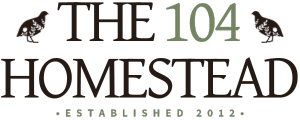Nigerian Dwarf Goats: Perfect for Every Homestead
Nigerian Dwarf goats are perfect for any homestead. Get tips on selecting the right goats and taking the best care of them possible.
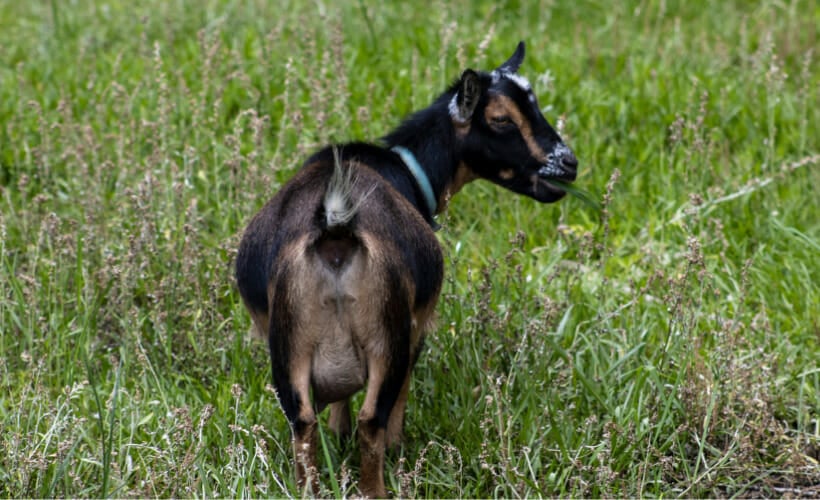
So you’ve been calculating the expenses. It’s finally time to get prepared for your first goat. If you’ve been dreaming of adding these adorable creatures to your homestead, you’ve come to the right place. We’ll explore why Nigerian Dwarf goats are the perfect choice for every homestead and their size, milk production, and companionability benefits.
Whether you’re a beginner or an experienced goat owner, I’ll guide you through the process of selecting the right goats for your dairy herd, understanding the importance of pedigree, and providing the best nutrition for your goats.
Get ready to embark on an exciting journey as I share the ins and outs of buying Nigerian Dwarf goats.
Why Choose Nigerian Dwarf Goats?
Nigerian Dwarf goats are perfect for every homestead for several reasons.
Firstly, their small size makes Nigerian Dwarf goats incredibly manageable and suitable for homesteads with limited land. Their diminutive stature not only makes them easier to handle but also means they require less space compared to larger goat breeds. This is a significant advantage for homesteaders who may not have vast expanses of land available. With these smaller goats, you can enjoy all the benefits of goat ownership without the need for extensive acreage. They happily thrive in smaller grazing areas, making them the perfect choice for those who want the joy of goats without the space constraints.
Secondly, Nigerian Dwarf goats are known for their excellent milk production, making them a valuable addition to any dairy operation. Despite their small size, they are capable of producing a surprising amount of high-quality milk. In fact, their milk is renowned for its richness and flavor (thank you, butterfat), making it perfect for making delicious cheese and other dairy products. Whether you’re a cheese enthusiast or simply enjoy the taste of fresh, creamy milk, Nigerian Dwarf goats are sure to satisfy your dairy needs. With their exceptional milk production, these goats bring taste and versatility to the table, making them a popular choice among dairy farmers and enthusiasts throughout the United States.
Additionally, Nigerian Dwarf goats are known for their friendly and sociable nature, making them great companions for both adults and children. These goats have a natural curiosity and playful demeanor, making them enjoyable to interact with. They are known to form strong bonds with their human caregivers, often seeking affection and attention. Nigerian Dwarf goats are social animals that thrive on human interaction, eagerly participating in activities and often displaying their affection through gentle nudges or playful antics. Their friendly and sociable nature makes them wonderful companions, providing entertainment and a source of emotional support and connection. Whether you’re seeking a furry friend to brighten your day or looking for a gentle playmate for your children, these goats will surely bring joy and companionship to every family member.
Lastly, their adaptability to various climates and their hardy nature make these goats resilient and easy to care for in different environments. Whether you live in a hot and arid region or a cold and snowy one, these goats can thrive and adapt to the conditions. Their ability to withstand various climates makes them ideal for homesteaders in diverse geographical areas.
Choosing Your First Goats
Let’s discuss how to choose the right goats, the importance of pedigree, and the key considerations and tips when selecting goats for your dairy herd. Get ready to learn what you need to make sure you get the most out of your goats!
What ages would you recommend if someone was just starting a small dairy herd and wanted to get two goats?
It’s important to know that goats are herd creatures who need a companion or are unhappy. I won’t sell a single animal unless they are going to a home where there are already companion goats or other animals. So, the first thing to realize is that you will need some combination of at least two unless the goat is intended as a companion to another species (such as horse, lama, etc.).
For those wanting incredible milk, then purchasing two good quality doelings (young does) might make sense. By bringing them home just after weaning or as bottle babies, you can ensure that they are well-socialized as they grow, and you will have time to learn to care for them before needing to learn about breeding, kidding, and milking. However, many of the quality doelings from great milking lines are reserved months before they are born, so it’s a good idea to get on a reservation list early. The downside of this approach is that you will have to wait at least a year and maybe two before getting that terrific milk.
For those wanting the milk immediately, one approach is to purchase a doe in milk and her doeling. This gives you the benefit of immediate milk without dealing with breeding and kidding immediately. You will have to learn how to milk and care for the mature doe, but you also get milk and the benefits that go along with raising your own doeling. Finding a doe and doeling for sale from great milking lines can be difficult, so this is a strategy that sometimes takes time to execute.
Two does who are already in milk also work if you’re ready to jump into milking, but it’s a good idea to milk any mature goats and taste their milk to ensure you’re ready before bringing them home.
How important is a pedigree? Does it really help when selling kids?
Again, it depends – if you’re buying wethers that will be pets, then a pedigree doesn’t matter much. However, if you’re buying goats for milking or showing, then pedigrees become highly important.
Particularly for those new to goats (and even those that have been breeding them), it’s very difficult to tell how much milk a doeling will produce or how conformationally correct a goat will become.
Examining the pedigree makes it possible to “predict” how conformationally correct a goat will be and how much milk she might produce. When selling kids, buyers also want to see pedigrees so they have an idea that they’re buying a goat that will achieve their goals.
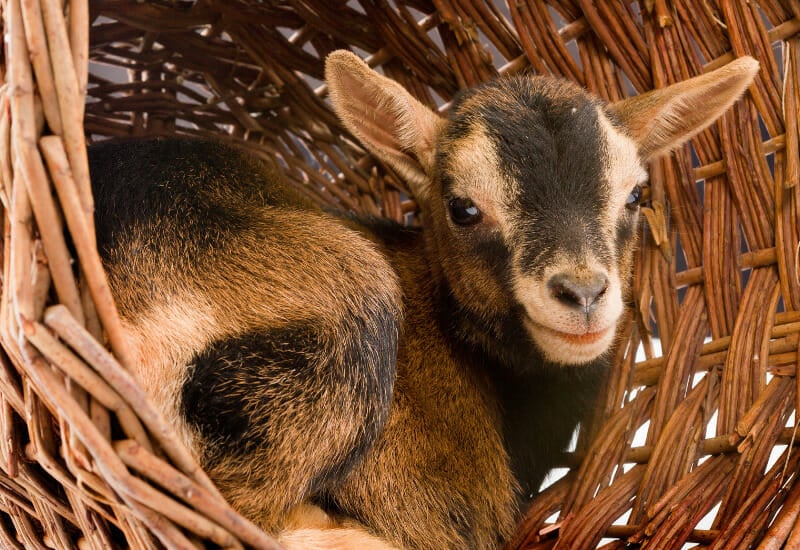
Feeding Your Goats
Feeding your goats the right diet is essential for their health and performance. But the world of goats, hay, grain, and minerals can be daunting. How much hay or grain should you feed? How many blocks does each goat need? What type of hay should you provide? Understanding goat nutrition and the basics of feeding goats is key to ensuring your goats stay healthy and thrive.
There is a lot of talk about grain requirements. How much do I give each day/twice a day?
Again, this depends a great deal on their age, gender, and what kind of grain you’re feeding them. It’s important to watch their body condition and adjust the amount of grain they’re receiving based on their weight and condition.
Mature bucks are generally not supposed to require a grain supplement; however, we’ve found that they do need a grain supplement formulated for them during the main breeding (fall) season. And the closer they’re housed to the girls, the more grain they seem to need. We have fed up to two cups twice a day to mature bucks.
Does that are dry or that are in their first couple of months of pregnancy also shouldn’t need a grain supplement. We start feeding pregnant does a small grain supplement a couple of weeks before they freshen, then increase to a much larger grain supplement once they’ve freshened and are producing milk daily. You don’t want to start them on grain too soon before they freshen, or the babies will get big and may be difficult to deliver.
A couple of cups of grain supplement twice daily in full milk production might be considered typical for a mature doe.
All sorts of “blocks” exist at the feed store in the goat section. Do I need all those blocks? What kind do my goats need?
Those blocks are mineral blocks; in most areas of the country, goats need supplemental minerals. For goats, we recommend feeding “free choice” loose goat mineral (not a block) and baking soda. They will eat the mineral and baking soda as needed.
How much hay does a Nigerian Dwarf goat eat in a week?
That depends both on the age and gender of the goat and the kind and quality of hay. It’s a little hard to generalize because hay and goats vary so much, so I’ve tried to use quantities that are on the high side below so there aren’t too many surprises on how much they eat.
Male goats (bucks) don’t really need high-quality legume hay (such as alfalfa). They generally need only a first-cut alfalfa that contains lots of grass hay. An adult buck getting grass or first-cut alfalfa hay will eat a few flakes daily. There are usually about 14 flakes of hay in a standard square bale. So, for a mature buck, perhaps a bale a week.
For an adult doe, it depends on whether she’s dry (not in milk), lactating, or pregnant. An adult doe that’s dry also doesn’t need high-quality legume hay. She might eat about a flake a day of grass or first cutting alfalfa hay. A standard square bale might last her two weeks.
Does that are pregnant don’t need high-quality legume hay until shortly before they’re ready to freshen (give birth). Since they’re eating for more than just themselves, they will ramp up from a flake to two (or more) flakes a day. Starting shortly before they freshen, then it’s important to provide them with high-quality legume hay. This will help them with the ability to produce milk.
The amount they eat will depend on how many kids they’re feeding and the quality of the hay. A couple of flakes daily of very good quality alfalfa (second or third cutting) are typical.
Are there different kinds of hay?
Yes, grass hays (such as timothy) and legume hays (such as alfalfa) exist. Legume hays provide much higher protein levels than grass hays and are beneficial for does that are producing milk. Dry does, bucks, and wethers generally don’t need legume hays.
Choosing from 1st, 2nd, or 3rd cuttings is often possible within the legume hays. Protein levels generally increase with the age of cutting. The highest quality (2nd or 3rd cutting) alfalfa hays should typically be reserved for does that have just freshened and are producing milk.
Can I grow legumes for my goat’s dietary needs?
Yes, I have often fed our goats the pea plants from the garden. [See Better Hens & Garden’s list of approved garden greens.]
Can I plant things in the goat yard for them to eat?
Of course! Just remember that they can quickly eat a small shrub. Make sure that you don’t plant anything that is poisonous. You can also grow fodder for them to save money.
I want my goats to clear land for me. How do I find out if plants are bad for them in there?
It’s important to find out which plants grow in your area that are poisonous to goats. Learn to identify them and search through their pasture area and eliminate them. Cornell University has a list online that you can use as a reference.
Well-meaning neighbors have also been known to poison them by providing cuttings from common landscape shrubs (such as rhododendrons).
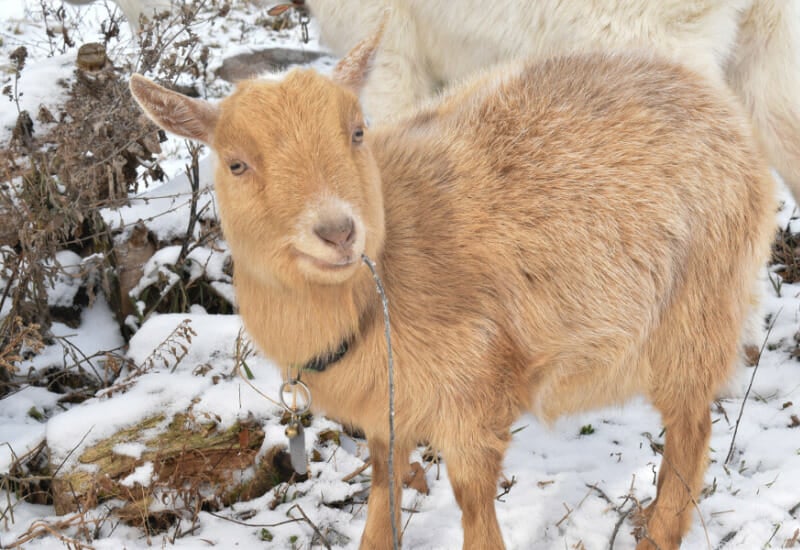
Goat Enrichment & Entertainment
Goats are often seen as adorably mischievous escape artists, but with a few simple steps, you can easily turn your mischievous goat into an obedient and enriched pet. So if you’re ready, let’s explore the goat enrichment and entertainment world!
Are there things I can do (entertainment stuff) to encourage my goat not to escape?
Adding large rocks or structures to their pasture for them to play on as “toys” encourages them to stay inside. Just make sure the structures aren’t so close to the fencing that it helps them escape. Enrichment is important for all livestock.
Can I take my goat for a walk? Is it hard to leash-train them? Will a Nigerian Dwarf goat outmaneuver my 10-year-old while on a leash?
Goats are quite bright and can pick up on a schedule or train quickly. You can start training them to walk on a leash when they’re small. Once trained, they should be easy to handle, even for a 10-year-old. Training an older doe that isn’t used to a leash can be difficult. They enjoy being given “treats” as a reward when they do things correctly – we use animal crackers which they love.
If you’ve found value in this blog post and enjoyed reading it, why not share it with your Pinterest community? Pin the image below and spread the love!
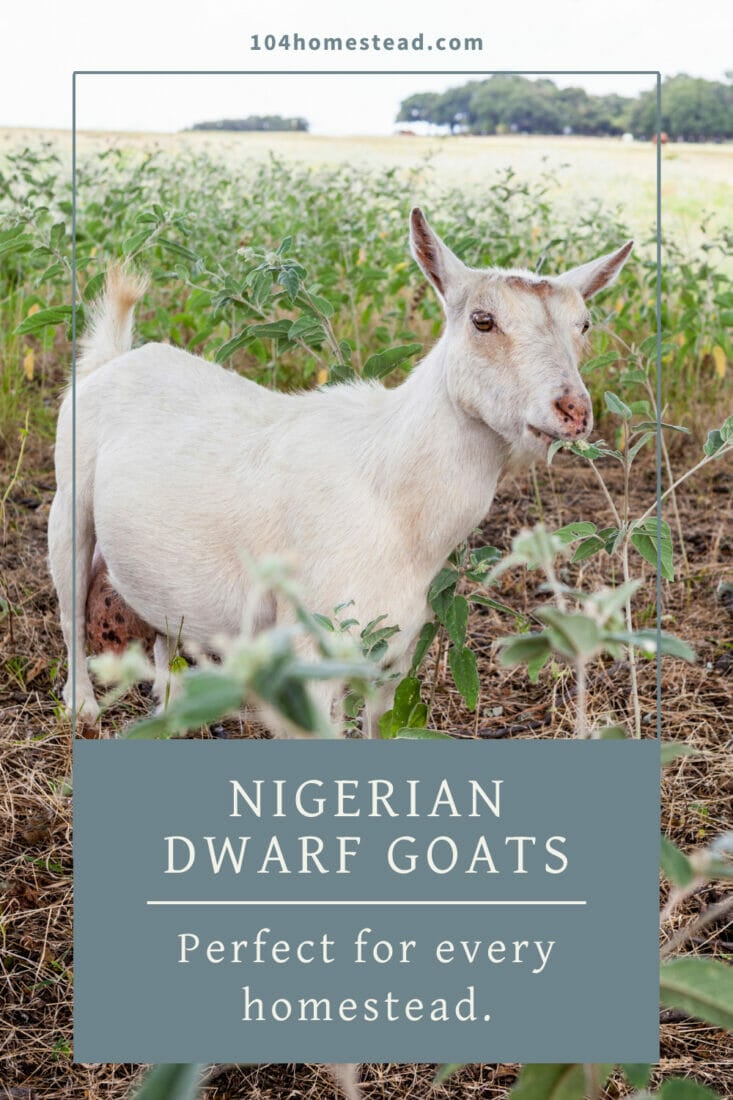
I hope you’ve gained valuable insights into the world of Nigerian Dwarf goats. These charming and productive creatures are the perfect addition to any homestead, offering a smaller size, excellent milk production, and friendly companionship. Whether you’re starting a small dairy herd or simply looking for a delightful pet, Nigerian Dwarf goats bring joy and productivity to every corner of your homestead.
Have you ever raised Nigerian Dwarf goats? Share your experience in the comments below.
Happy goat-keeping!
